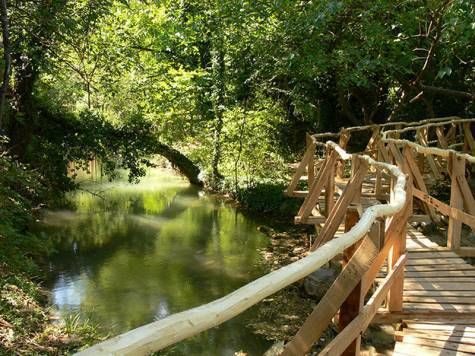

2 km south of the Gostilitsa village, the Yantra river forms a small fertile valley, surrounded on all sides by undulating hills. Here, between the mouths of two small streams on the left side –Uzunovo Ravine and Malkoyalarska Stream, are the ruins of the Roman fortress “Diskoduratera”, a whose name means “Double Power Fortress”.
Built and inhabited from the second half of the 2nd century, it was founded during the the reign of Emperor Marcus Aurelius by the citizens of Augusta Traiana and the conventional road station became one of the main markets of the provinces of Lower Danube. A wide and comfortable way leads from Nicopolis ad Istrum to Augusta Traiana, Constantinopol and Asia Minor. The Thracian name of the Diskoduratera place was an important custom point between Moesia and Thrace. It sheltered a mint, too. During the 3rd century, Diskoduratera it was destroyed by the Goths, and rebuilt later, to reach its peak during the 5-6 century, since arrival of the Slavs. During the archaeological diggings were found walls, towers, buildings and more.
The ”From Diskoduratera so far” eco-route offers an interesting experience, which combines the beautiful landscape and historical landmarks. The eco-route has a 3 km lenght and has as a final destination – he foot of the ancient city Diskoduratera. Diskoduratera is part of a trade ancient route to Asia Minor, which starts from Nikopolis ad Istrum (the ruins are located near the village Nikyup, 20 km north of Veliko Târnovo), and passes throught the the Augusta Traiana Fortress (today Stara Zagora) and Konstantinopol. During the transition period, the flora and fauna typical Balkan Mountains can be observed. The eco-route passes nearby the old Roman road, which is near ritual the mound – Yurta. Passing on a Roman bridge and an old mill. The route is equipped with relaxation areas and a fountain with drinking water.
